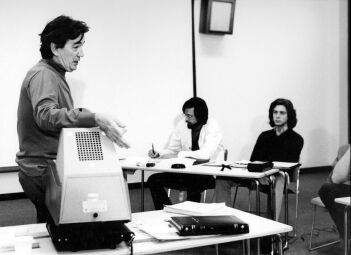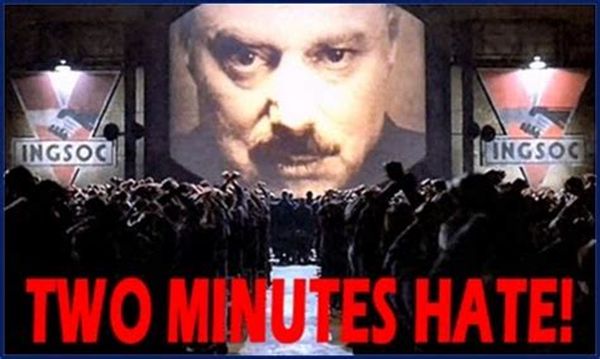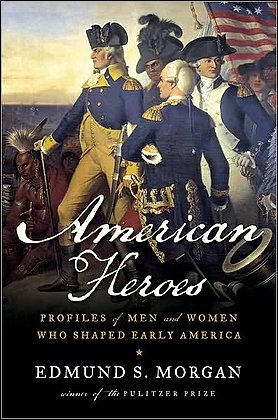An All-American Scottish Wit
From The New York SunAlexander Mackendrick in the Classroom
Born in Boston, Alexander Mackendrick soon returned with his parents to their native Scotland and went on to become the director of a number of what we still think of as quintessentially British films before ending his days as Dean of the Film Department at the California Institute of the Arts. A retrospective of his films will be showing from September 5th through the 30th at the Museum of Modern Art. Unfortunately, there are only nine of them, which was partly if not mostly on account of the scandal caused by his first — and almost his last — American film, The Sweet Smell of Success. Watching it today, you’d be hard put to it to be able to tell what all the fuss was about, but, believe it or not, in the 1950s people found the idea of corrupt, grasping and power-crazed journalists shocking.
Yet this film was also very much like Mackendrick’s British pictures in portraying the rich, the powerful or the sophisticated in the process of being humbled by simple folk — whether they are Scottish crofters, peasants and fishermen (Whisky Galore, The Maggie), old ladies (The Lady-Killers) or children (A High Wind in Jamaica). In The Sweet Smell of Success (1957), the ruthless and powerful newspaper columnist, J.J. Hunsecker (Burt Lancaster) is finally defied by the mousy little sister (Susan Harrison) whom he had attempted to control and manipulate with the help of the slimy press agent, Sidney Falco (Tony Curtis). As in the earlier films, decency and integrity win out in their struggle with mere power. But there is a harder edge to the American picture. Neither Lancaster’s J.J. Hunsecker, a scarcely disguised portrait of Walter Winchell, nor Curtis’s Sidney Falco has any redeeming features, whereas the depictions of power versus principle in the British films is less one-sided.
Not only, that is, are the powerful — like Basil Radford’s Captain Paul Waggett in Whisky Galore (1949) or Paul Douglas’s American tycoon, Calvin B. Marshall, in The Maggie (1954) rather quirky and lovable themselves, but the little people who thwart them in their attempts to exercise power are certainly no angels. Indeed, it could be argued that the Hebridean villagers who loot a cargo of whisky from a foundered ship in Whisky Galore are the ones with power on their side while Captain Waggett and the representatives of the Inland Revenue stand for principle — the principle that the tax laws should apply equally to all. But of course the movies had by that time already established their adherence to the view which has been typical of the popular culture, with some interruptions, since the 18th century when John Gay’s Beggar’s Opera first glamorized the criminal classes. To this day, those who live on the fringes of the law, if not absolutely outside it, tend to be portrayed in the movies as being more generous-hearted, authentic people than those who uphold it — usually because it is in their interest to do so. But Mackendrick has the rare quality, to my eye anyway, of being able to make us believe it.
One of the funniest scenes in a Mackendrick movie comes in The Maggie when the factotum of Paul Douglas’s tycoon, a man named Pusey (Hubert Gregg) who is resplendent in pin-stripe suit, bowler hat and furled umbrella, is inveigled into joining in a poaching expedition. The poacher is young Dougie (Tommy Kearins), “the wee boy” on the eponymous “puffer” boat skippered by the unforgettable Captain Mactaggart (Alex Mackenzie). For a brief moment even Pusey, the perfect symbol of what was then beginning to be called “the Establishment,” joins the audience in recognizing where their sympathies naturally lie when the laird with his shotgun comes running after some poor fellow who is stealing his birds.
Perhaps the most interesting of Mackendrick’s films is the only one with a political dimension, The Man in the White Suit (1951). One of the greatest of the comedies produced by the legendary West London studios at Ealing in the 1950s, this stars Alec Guinness as Sidney Stratton, a scientist whose commitment to his own research for the betterment of ordinary people’s lives never wavers as he is fired from one job after another for not doing his employers’ bidding. Finally, his experiments seem to pay off. While working as a mere janitor at the textile mill owned by Alan Birnley (Cecil Parker), he invents a fiber that never wears out and never gets dirty. The cloth that is woven from it has to be cut with an acetylene torch, but the suit that results makes Sidney look like “a knight in shining armor” according to Daphne (Joan Greenwood), Birnley’s beautiful daughter and Sidney’s only champion.
She imagines that that is what he will be, too, to all those ordinary folks who are “fighting a battle against shabbiness and dirt. You’ve won that battle for them,” she tells Sidney, “and they’ll bless you for it.” Of course that’s not how it works out. Neither the mill owners nor their work force, neither capital nor labor want anything to do with a product that is bound to put them out of business, and they conspire together to suppress Sidney’s invention. The film’s most memorable moment comes after Sidney, with Daphne’s help, escapes from the room where he is being held captive by the mill owners and tries to get word to the outside world of his wonderful invention. As he returns to his humble furnished room to get what little money he has left there so as to be able to afford the train fare, he seeks help from Bertha (Vida Hope), the militant union representative who has been his friend up until now. “Whose side are you on?” asks Bertha as the light begins to dawn.
“The same as you,” says the otherworldly Sidney “Don’t you understand? They want to stop it!”
“So do we!” says Bertha, surprising herself by the identity of her interests with those of the bosses as much as she surprises Sidney. As an early example of insight into what is called “producer capture” — that is the tendency of large or monopoly producers of goods and services to organize themselves in a way that conduces to the interests of the producer rather than the consumer — this is hard to beat.
But my favorite of the films is The Ladykillers (1955), whose most remarkable feature was what was left out of last year’s inferior re-make by the Coen brothers. This was the sense of moral presence conveyed by Katie Johnson as the little old lady, Mrs. Louisa Wilberforce. Without being in the least preachy or didactic about it, Mackendrick makes her into a representative of the Victorian rectitude with which she had grown up and of which the memory was still potent, if waning, in the 1950s.This is what humbles and shames the criminal gang led by Alec Guinness (again) and makes it impossible for them to kill her. It is also what makes the ending so satisfying. She defeats not only the gang but, like the villagers in Whisky Galore, the authorities as well — because both, in their modern, go-ahead way, think she’s crazy. We, perhaps, know better by now.
Discover more from James Bowman
Subscribe to get the latest posts to your email.







